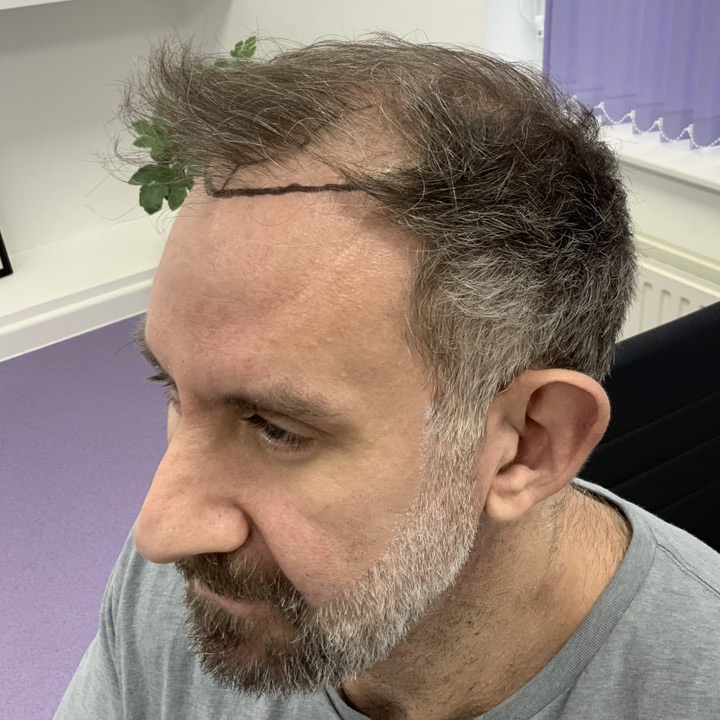Can a Hair Specialist Doctor Stop Hair Loss Quickly and Safely?
Can a Hair Specialist Doctor Stop Hair Loss Quickly and Safely?
Blog Article
Hair loss can feel like an unstoppable force. One day, your hair seems full and vibrant. The next, you're spotting more strands on your pillow, in the shower, or on your brush. For many, it triggers a race against time — a desire to find solutions that work now and don’t compromise safety. So, the big question is: can a Hair Specialist Doctor In Dubai stop hair loss quickly and safely? Let’s explore the reality behind expert intervention, what "quick" and "safe" truly mean in the context of hair loss, and how setting realistic expectations can help you get the best results.
Understanding the Root of Hair Loss
Before diving into how fast hair loss can be treated, it's important to understand what causes it. Hair shedding can stem from a variety of factors:
-
Genetics (like male or female pattern baldness)
-
Hormonal changes (such as pregnancy or menopause)
-
Stress or trauma
-
Nutritional deficiencies
-
Autoimmune conditions
-
Harsh hair treatments or styles
Each cause requires a specific approach. That’s why working with a Hair Specialist Doctor offers an advantage — they’re trained to identify the root cause rather than offer a one-size-fits-all fix.

What "Quickly" Really Means in Hair Restoration
In today’s fast-paced world, we expect results instantly. But with hair regrowth, the timeline isn’t as simple as flipping a switch. Hair grows in cycles — and these cycles take time.
There are three main stages:
-
Anagen (growth phase) – lasts 2–7 years
-
Catagen (transition phase) – lasts about 10 days
-
Telogen (resting/shedding phase) – lasts around 3 months
Even the most effective interventions often require a minimum of 3–6 months to show noticeable improvement. That said, a Hair Specialist Doctor may be able to slow down or halt rapid loss fairly quickly depending on the underlying cause.
Safe Interventions That Support Faster Results
A major concern for many is safety. The good news? Hair specialists focus on treatments that protect your health while enhancing your hair’s appearance. Here's how:
Scalp Assessments & Targeted Plans
Rather than guessing, a thorough scalp evaluation can determine if inflammation, poor circulation, buildup, or follicle damage is playing a role. From there, customized strategies can be developed.
Nutritional Support
Sometimes, hair loss is your body’s way of signaling a deficiency. A specialist may recommend dietary changes or safe supplementation to address gaps — especially in iron, biotin, or zinc.
Non-Invasive Technologies
There are a number of non-invasive therapies designed to stimulate follicles, improve blood flow, and promote natural growth without harsh procedures. Many of these support existing hair and reduce fallout quickly.
Lifestyle Adjustments
Even daily habits — like how you wash, dry, or style your hair — can impact breakage and thinning. Professionals guide you toward healthier routines that preserve strands and minimize shedding.
Managing Expectations Without Losing Hope
Hair restoration isn't magic. It's science, consistency, and patience. While it’s tempting to expect overnight miracles, it’s more productive to stay informed, involved, and realistic.
If the treatment is working, here’s what you might notice:
-
A reduction in daily shedding
-
Improved scalp condition
-
Thicker, stronger strands over time
-
New hair sprouting along the hairline or crown
These subtle signs are your body’s way of saying, “This is working.”
Why Timing Matters in Hair Loss Treatment
The sooner you take action, the better the outcome. Waiting too long allows the follicles to miniaturize — which means they shrink until they no longer produce visible hair. Once these follicles are dormant, it's much harder to revive them. Early intervention, guided by a Hair Specialist Doctor, helps preserve what's there and prevent further decline. It's not just about restoring hair — it’s about preserving confidence and control.

Realistic Results: What to Expect in 30, 60, and 90 Days
30 Days:
You may begin to notice reduced hair fall, especially after showers or brushing. Your scalp may feel healthier and less irritated.
60 Days:
New baby hairs may start to emerge, and existing strands may appear fuller and shinier. Any nutritional or topical interventions begin to show effects.
90 Days:
Stronger regrowth becomes visible. You’ll likely see improved density in thinning areas and less shedding overall. With continued treatment, results become more pronounced over the next few months.
Avoiding Quick Fixes That Compromise Safety
Fast results can be tempting, but shortcuts often come at a cost. Over-the-counter products that promise overnight regrowth might contain harsh ingredients that do more harm than good. It's crucial to avoid:
-
Unregulated treatments
-
DIY scalp needling
-
Harsh chemical applications
-
Misinformation from non-professional sources
Instead, lean on professional advice. It's not just about growing hair — it’s about growing it the right way.
Final Thoughts: Is Quick and Safe Hair Recovery Possible?
Yes — but with a caveat. “Quick” in the hair world still means “within weeks to months,” and “safe” means avoiding aggressive, untested shortcuts. The most effective outcomes come from understanding your body, identifying the cause, and committing to a personalized strategy that promotes long-term growth and health. A Hair Specialist Doctor can be the turning point in your hair journey. By combining medical insight, modern technology, and personalized care, they empower you to stop hair loss safely — and for good.
Report this page